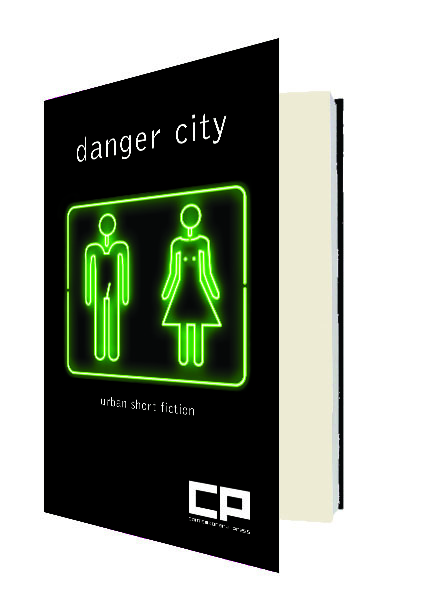A few years back, the story goes, a group of friends were at their Wednesday night drinking club airing their grievances over a couple of beers. “The job market was for shit, and we were all tired of having to smoke corporate cock to make a buck,” they would later write, in the introduction to their first fiction anthology, Danger City. Then, inspiration struck: they would publish their own books—pulpy, soused-up, badass books—and to hell with everyone else. They named their fledgling company Contemporary Press, and made their slogan “Fuck literature.”
Since then, this self-made band of raunchy ironists has written, designed, and published eleven novels, with titles like The Bride of Trash and How to Smash Everyone to Pieces, as well as two story collections, the second of which, Danger City II, is just out. Their work is not lyrical and it is not about the beauty of everyday life and it is not for kids. Rather, in their pages you’ll find an abundant cast of femmes fatales, goons, detectives with drinking problems, bloodied faces, zombies, sex, and guns—all served up with an acid smirk bordering on a sneer. The project isn’t so much to poke fun at pulp genres, though there’s plenty of that, but to use the outlandishness of pulp to blast away the banalities of hipster life, and to give voice to its frustrations.
Take “Delivery,” by Todd Robinson, a memorable story from the first collection about a “scumbag drug dealer” named Jamie who lives with his mother. Jamie’s existence is roundly miserable, but he is particularly oppressed by a ferocious heroin addict named Trezza. When Jamie brings a pot delivery to Trezza’s place, on the bad side of town, he notices that Trezza’s wife and five-year-old kid are both sporting bruises. Trezza also has a reputation for beating up drug dealers, like Jamie’s friend Ike. “Ike made himself some extra cash by selling fake G- 13,” Robinson writes. “Trezza knew the difference and took it out on Ike. That was over a year ago. Ike was still eating through straws.” It’s possible to think of Trezza as an extension of the corporate bullying that so disgruntled the Contemporary Press founders. As in almost all of these tales, the hero is an underdog who gets the last laugh, proving, perhaps, that fiction is the best revenge. After Trezza bashes in Jamie’s nose, Jamie shows up for their next transaction with a bag of Clorox, which he surreptitiously switches with Trezza’s heroin.
Without a doubt, the most crowd-pleasing story in Danger City is “Faggy on the Streets,” by Jeffrey Dinsmore. Like his fellow authors, Dinsmore likes his fiction rough, but he...
You have reached your article limit
Sign up for a digital subscription and continue reading all new issues, plus our entire archives, for just $1.50/month.
Already a subscriber? Sign in





